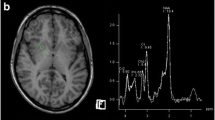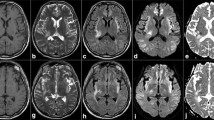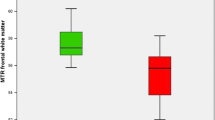Abstract.
Cirrhotic patients are known to have abnormally high signal principally in the globus pallidus on non-contrast T1-weighted MRI. The purpose of this study was to relate MR changes to clinical and pathological features of chronic liver disease. We confirmed abnormally high signal in the globus pallidus on T1-weighted images in 25 of 28 patients with chronic liver disease, showing that it also occurs in patients who have not yet progressed to cirrhosis. Changes were seen in patients both with and without clinical portosystemic shunting. This abnormality is not responsible for hepatic encephalopathy. Cholestatic disease was more likely to produce marked changes than non-cholestatic disease. No statistically significant correlation was demonstrated between the severity of liver disease and the degree of MR abnormality. However, marked improvement in MR appearances was seen after successful liver transplantation.
Similar content being viewed by others
Author information
Authors and Affiliations
Additional information
Received: 23 February 1996; Revised version received: 29 July 1996; Accepted: 5 November 1996
Rights and permissions
About this article
Cite this article
Skehan, S., Norris, S., Hegarty, J. et al. Brain MRI changes in chronic liver disease. Eur Radiol 7, 905–909 (1997). https://doi.org/10.1007/s003300050225
Published:
Issue Date:
DOI: https://doi.org/10.1007/s003300050225




